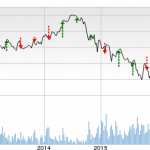
Going into 2018 traders are feeling good; U.S markets continue to hit all-time highs; emerging markets have just had their best performing year since 2009; for some reason bitcoin continues to surge and even oil is up for the second year in a row. However, one corner of the trading universe seems to have forgotten that we are in the bull market: soft commodities like coffee, sugar, orange juice and cocoa. While the fundamentals continue to look bearish for most of these commodities, one has the potential to pose a remarkable comeback… cocoa.
Most people are unaware that cocoa, the main ingredient in cocoa powder that is used to make chocolate, is traded, let alone have any interest in investing in it. This makes sense, but while cocoa may not be as widely traded as other commodities like oil or gold, cocoa futures do have enough volume and liquidity to allow traders to speculate on prices. Often times the best opportunities come from the places you least expect.
Cocoa did not have a good couple of years, futures were down almost 20% in 2017 and 30% in 2016 on the back of a huge supply glut, one that is expected to continue going into 2018. However, there are signs that the bear market in cocoa is beginning to subside. To understand how cocoa prices can rebound it is necessary to understand what caused them to melt down in the first place.
Cocoa’s collapse over the last two years can be mainly attributed to a large crop in West Africa that caused a huge surplus to occur (basic economics, when supply outstrips demand prices go down). Over 70% of cocoa production takes place in West Africa, from countries like the Ivory Coast and Ghana. This means that cocoa prices are highly sensitive to events in the region be it weather, political or economic in nature. In this case, abnormally favorable weather in West Africa caused countries like Ivory Coast to produce far more cocoa than usual, over two million tons to be exact. Large supply coupled with the fact that the global confectionary market experienced a broad based slowdown during 2016, meant that a surplus of 347,600 tons formed, hence falling prices.













Leave A Comment